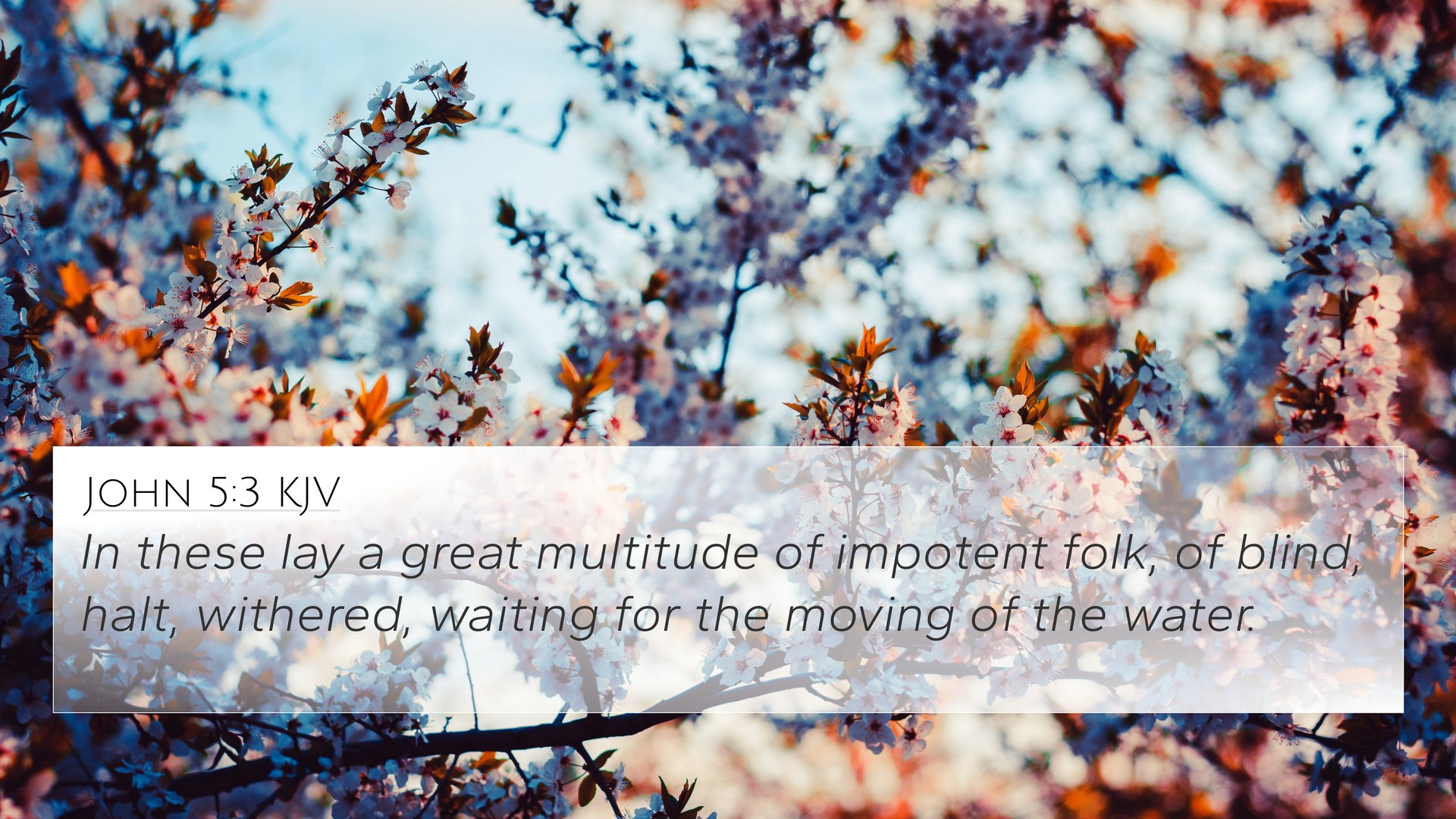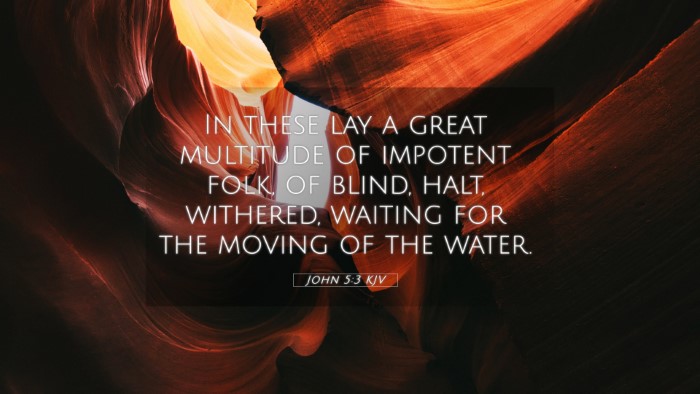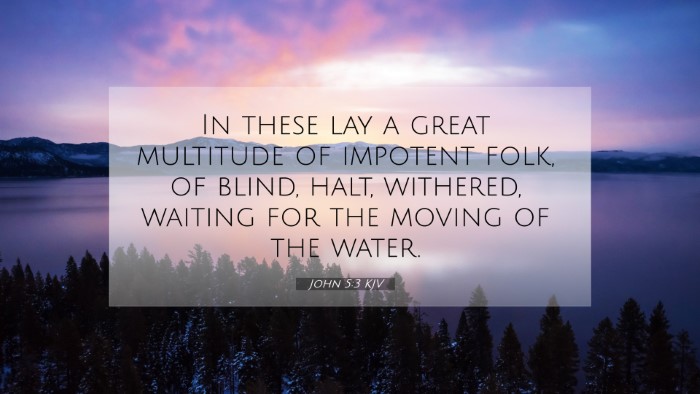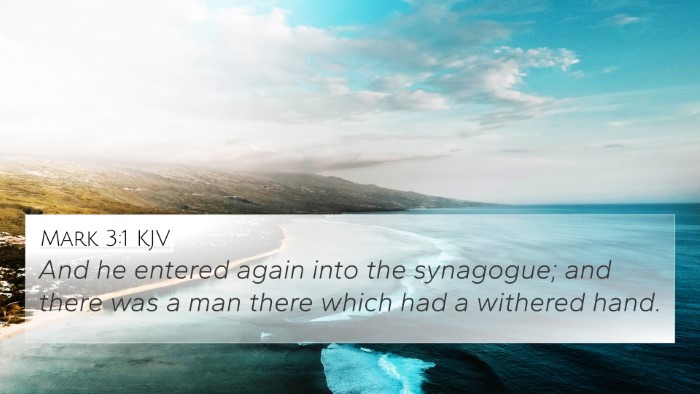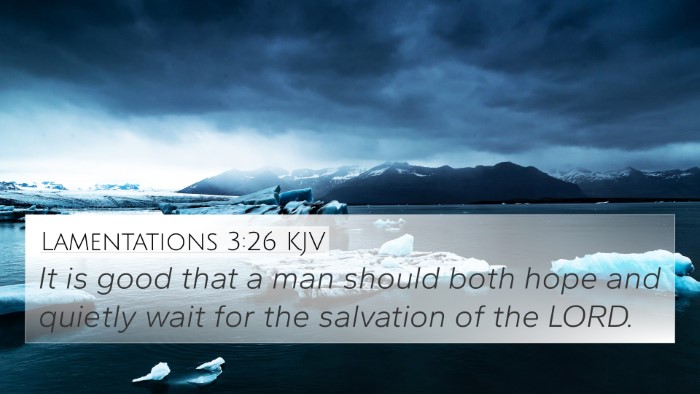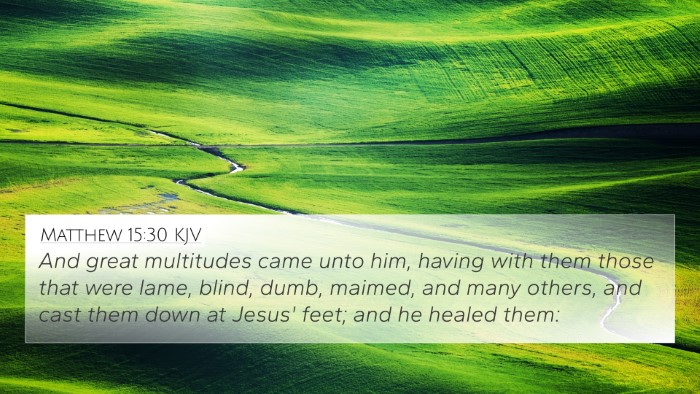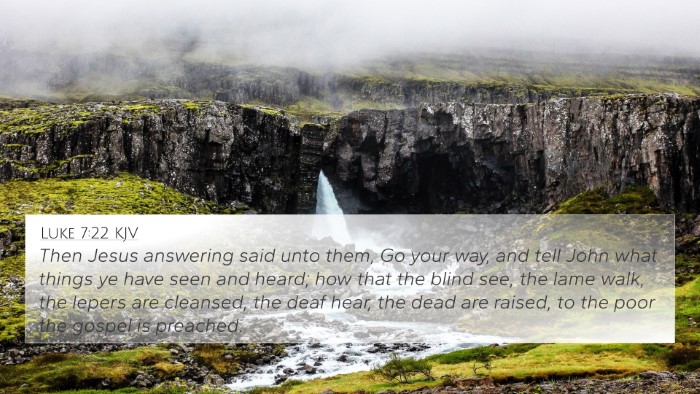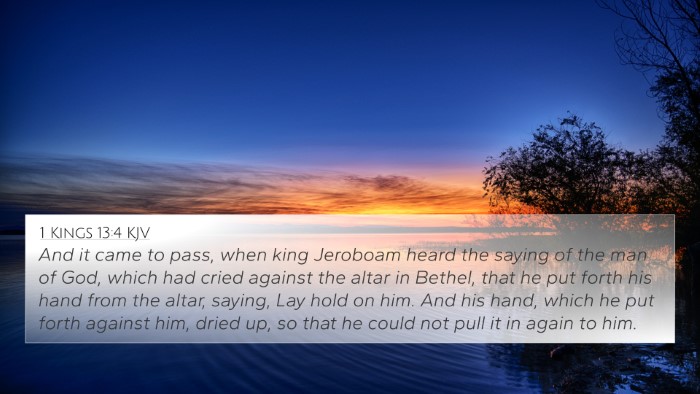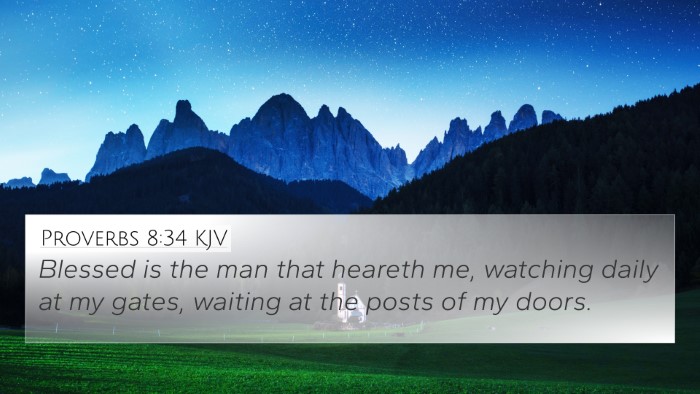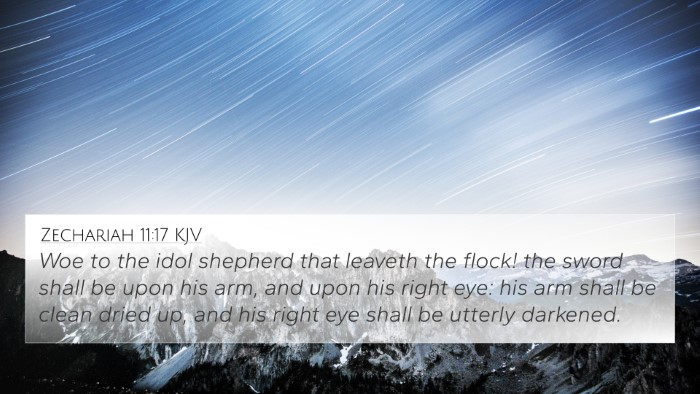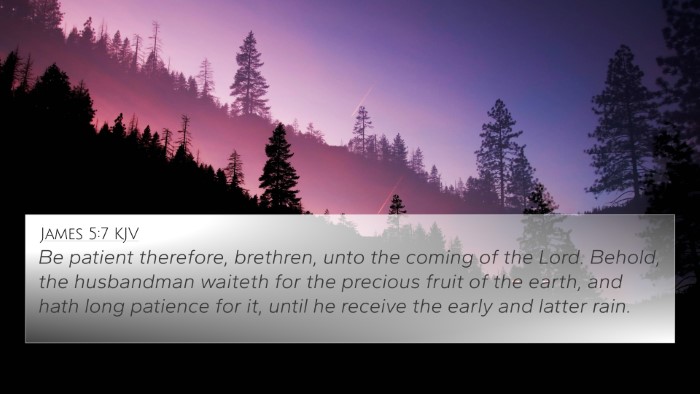Understanding John 5:3
John 5:3 states, "In these lay a great multitude of impotent folk, of blind, halt, withered, waiting for the moving of the water." This verse serves as a vivid depiction of the scene at the pool of Bethesda, where various afflicted individuals hoped for healing. The description not only illustrates physical ailments but also symbolizes larger themes of hope and despair within biblical texts.
Contextual Background
To truly grasp the meaning of John 5:3, one must consider the surrounding verses and the historical context:
- Located in Jerusalem, the pool of Bethesda was believed to have medicinal properties that could heal the infirm when the waters were stirred.
- Jesus’ interaction with this crowd of afflicted individuals showcases his compassion and miraculous powers.
Commentary Insights
Insights from various public domain commentaries offer a multifaceted view of this verse:
-
Matthew Henry: He emphasizes the spiritual condition of the people gathered at the pool, likening their physical ailments to a greater spiritual lack. Henry notes that the multitude represents humanity's common struggles and their desperate search for healing and redemption.
-
Albert Barnes: Barnes focuses on the significance of waiting for the "moving of the water." He explains that this waiting signifies the human condition of yearning for healing and divine intervention, underscoring the need for faith in Christ as the ultimate source of healing.
-
Adam Clarke: Clarke draws attention to the physical descriptions in the verse, indicating that they symbolize the broader spiritual maladies of humanity. His exposition links the need for physical healing to the spiritual healing offered through Christ.
Inter-Biblical Connections
John 5:3 bears several thematic connections with other Bible verses:
- Isaiah 35:5-6: Describes the healing of the blind and the lame, offering prophetic insight into the nature of Christ's ministry.
- Matthew 11:5: Jesus refers to his ability to heal the blind and lame, fulfilling the prophecies concerning the Messiah.
- John 9:1-7: The healing of the man born blind further illustrates Jesus’ power over physical ailments.
- Mark 2:5-12: The healing of the paralytic conveys similar themes of faith and Jesus’ authority to heal and forgive sins.
- Luke 4:18: Echoes the mission of Jesus—to heal the brokenhearted and set the captives free—highlighting his role as a healer.
- James 5:14-15: Reflects on the power of prayer and faith in healing, which parallels the themes found in John 5:3.
- Revelation 21:4: Offers a hope for complete restoration and healing in the future, tying back to the longing evident in John 5:3.
Thematic Reflections
This verse invites deep reflection on the following themes:
- Desperation and Hope: The multitude's plight illustrates humanity's desperate search for hope and healing.
- Divine Intervention: This passage demonstrates the necessity for divine grace in miraculous healing, pointing to Christ as that grace.
- Faith and Belief: It subtly encourages the unseen but essential role that faith plays in receiving healing and restoration.
- Community of the Afflicted: The presence of many afflicted individuals indicates the importance of community in times of suffering.
Concluding Thoughts
John 5:3 serves as a reminder of the physical and spiritual struggles faced by humanity while offering insight into the healing ministry of Jesus. By connecting this verse to others throughout the Bible, one can gain a comprehensive understanding of its significance. Through scriptural cross-referencing, believers can uncover a rich tapestry of themes regarding healing, hope, and the compassionate nature of Christ.
